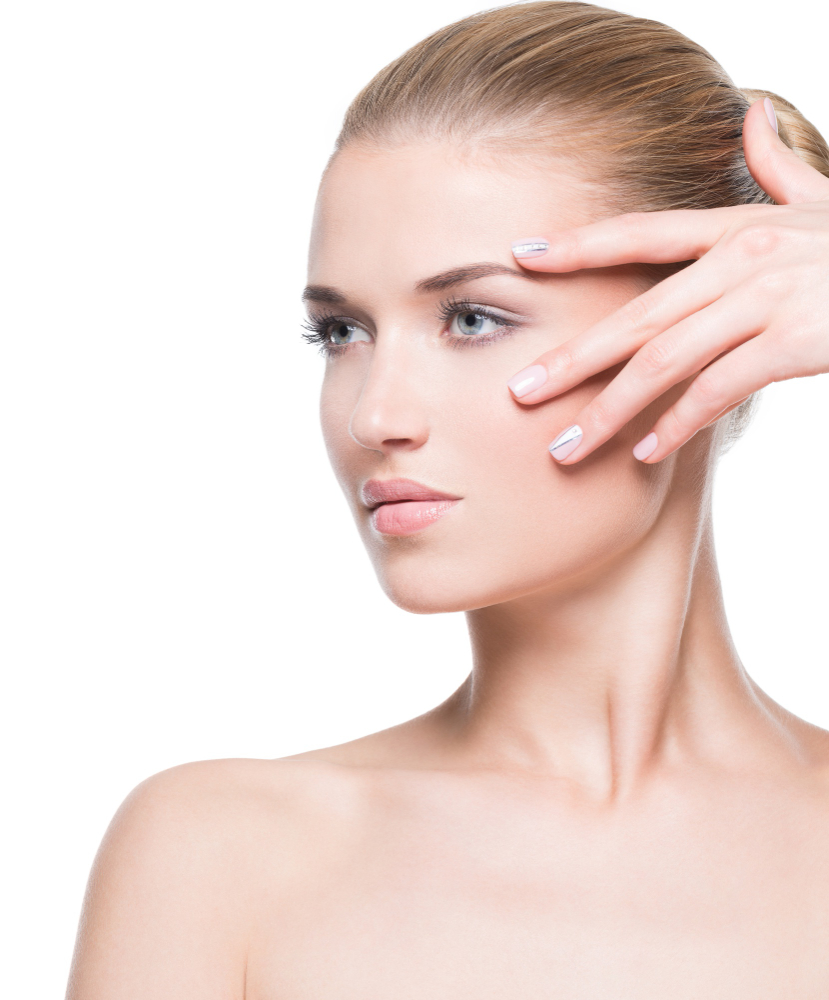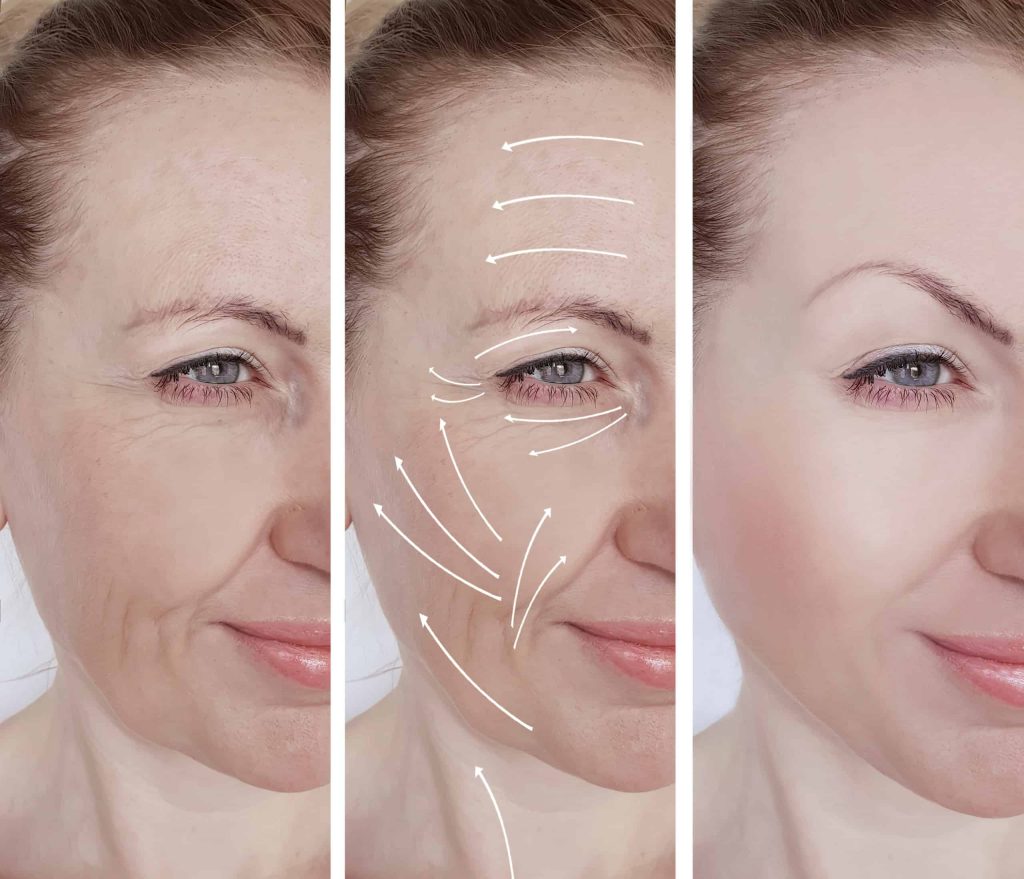Rhytidectomy (Facelift)
A Rhytidectomy, also known as a facelift, is a popular cosmetic procedure aimed at enhancing the appearance of facial and neck aging. It is crucial to consult with your surgeon to determine the most suitable type of facelift surgery for your needs.

What is a Rhytidectomy?
A facelift is a surgical technique that involves elevating and firming the facial and neck tissues, effectively reducing the appearance of sagging skin on the face. Additionally, the procedure may also encompass:
- tightening of facial muscles
- eliminating or reallocating fat from the neck, jawline, and facial areas
- The process involves transferring excess fat from one area of the body, like the belly, and using it to enhance features such as the cheeks.
A meloplasty or rhytidectomy, commonly referred to as a facelift, is a surgical procedure to rejuvenate the appearance of the face.
A facelift can be combined with other cosmetic procedures such as a forehead lift, eyelid surgery, or rhinoplasty.
Although a facelift can be performed through surgery, there are alternative methods available that do not require any surgical procedures. These alternatives include the use of fillers, dermabrasion, and thread lifting.
What are the types of Rhytidectomy?
- The mini facelift is a variation of the facelift procedure that focuses on tightening loose skin in the neck and jawline area.
- A mid-facelift, also referred to as a cheek lift, is a procedure that targets the removal of drooping skin found between the upper mouth and eyes, which includes the area of the cheeks and nose.
- A nonsurgical facelift is a procedure that doesn’t need general anesthesia or big cuts, yet it aims to address signs of aging like drooping skin, lines, and wrinkles. Vampire facelifts, liquid facelifts, and thread lifts are all types of nonsurgical procedures that focus on rejuvenating the skin on the face.
Who qualifies as an ideal candidate for Rhytidectomy surgery?
Typically, individuals who are suitable candidates for a facelift are:
- People who are in good health and do not have any medical conditions that hinder the process of healing
- Nonsmokers
- People who have a positive perspective and practical expectations
How should I prepare for a Rhytidectomy?

When getting ready for a facelift, you might be requested to:
- Get lab testing or a medical evaluation
- Use specific medications or modify your current medication regimen
- Before the operation, use specific products on the skin of your face.
- Stop smoking
- It is advised to refrain from using aspirin, anti-inflammatory medications, and herbal supplements due to their potential to intensify bleeding and bruising.
What is the process for a Rhytidectomy?
The outcome of facelifts differs based on the results you want to achieve.
In the typical approach, a cut is created at the hairline close to the temples. The cut continues in front of the ear, running along the earlobe, and then leads to the back of the head behind the ears.
Excess facial fat and skin can be eliminated or repositioned. The muscles and connective tissues beneath are repositioned and firmed up. In cases of minor sagging, a smaller facelift called a “mini” facelift can be performed, which uses shorter incisions.
In case a neck lift is included, the surplus skin and fat will be eliminated, and the skin will be pulled back and tightened. Typically, this procedure is carried out by making an incision below the chin.
The cuts made during the procedure are typically closed with sutures that will dissolve over time or a special glue for the skin. Occasionally, it may be necessary to go back to the surgeon to have stitches taken out. The incisions are carefully placed to match your hairline and overall facial appearance.
After undergoing surgery, it is common to have a surgical drain inserted and bandages covering your face.
Immediately after Rhytidectomy surgery
After facelift surgery, you may expect:
- To prevent the accumulation of fluid, a tube is inserted into the wound for drainage purposes.
- bruising and swelling
- to receive antibiotics in order to avoid getting infected
- possible numbness
- pain and discomfort
- dressings or bandages on your face
- a garment that applies pressure to reduce swelling.

Recovery
A complete healing process of a facelift typically requires a period of approximately 2 to 4 weeks, during which it is advisable to take a break from work.
You can expect to see bruising for a minimum of 14 days, and it may take around 6 to 9 months to fully appreciate the results of the facelift.
Your surgeon will provide guidance on how many days you must refrain from driving after the surgery.
For the initial 48 hours, it is necessary to refrain from taking showers and keeping the bandages dry. Additionally, it is important to abstain from engaging in intense physical activities, visiting saunas, and receiving massages for a minimum of 14 days.
To minimize swelling, it is advised to use pillows to support your head while resting for a few days.
Stitches are taken out, unless they were dissolvable, typically within a period of 7 to 14 days.
Your bruises, scars, and changes in skin color should have diminished after several weeks.
Within the span of 6 to 9 months, the ultimate outcome of the facelift should become noticeable.
Non-surgical Rhytidectomy options
If you are interested, you might want to think about getting a facelift that does not involve surgery. There are various procedures available for rejuvenating your face.
- Chemical peels are a type of treatment that can enhance the appearance of the skin by refining its surface. This can effectively minimize the visibility of imperfections such as blemishes and wrinkles.
- Dermabrasion is a method of skin treatment that uses mechanical means to achieve a smoother skin texture.
- Fillers are a type of cosmetic injections that are used to minimize the appearance of wrinkles, scars, fine lines, and add volume to the skin.
- A procedure called the thread lift, also referred to as suture lifting or a PDO thread face lift, is a less aggressive method of facelift. During this procedure, threads are delicately inserted beneath the skin to enhance the appearance of sagging skin and tighten the facial muscles.
Having Rhytidectomy in Turkey?
The patient must carefully search for an appropriate service provider, have information, and ask about the surgeon and his experience. And also, checking examples of his previous operations.
Accordingly, we encourage you to contact the Health & Beauty to obtain all information and details, and to ensure that you have your operation done by the hands of the most skilled doctors working in this specialty.

